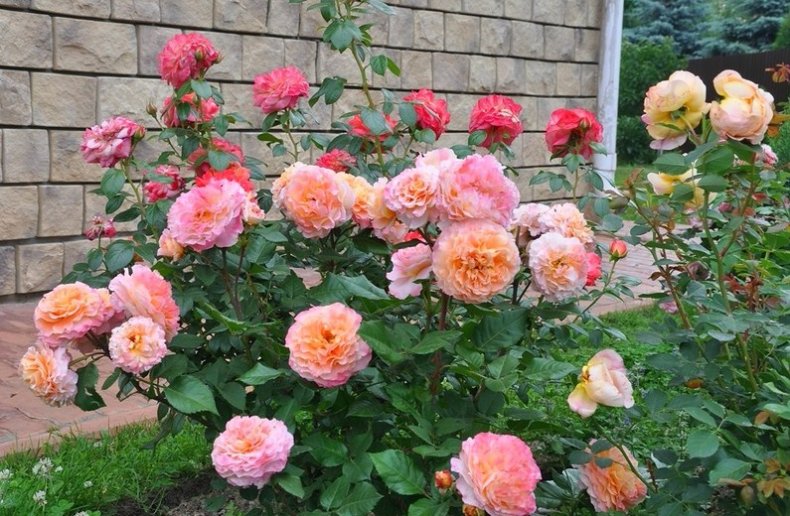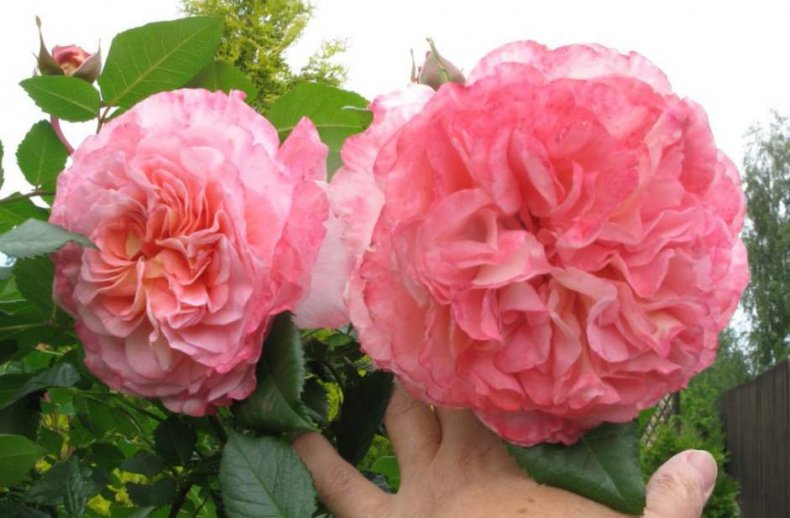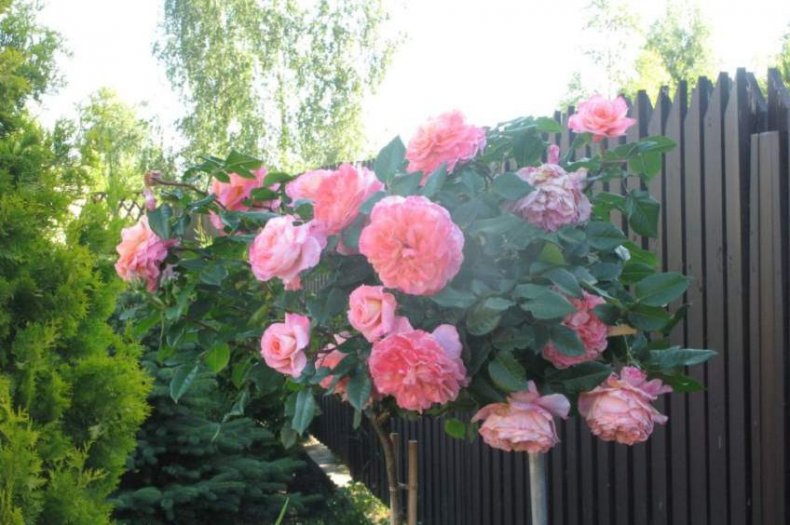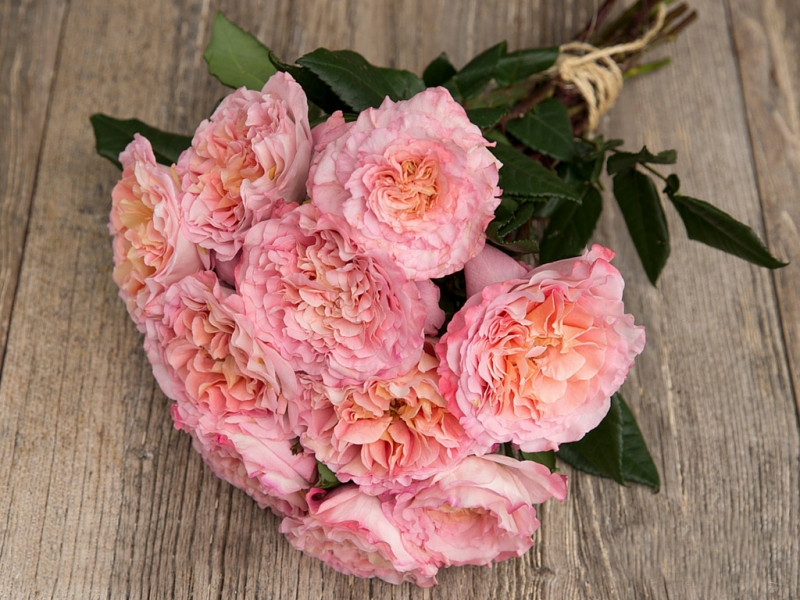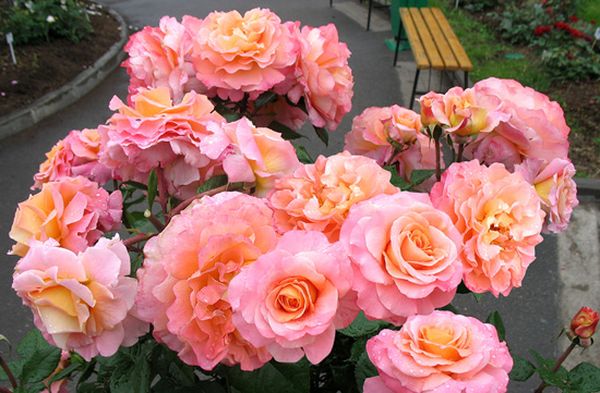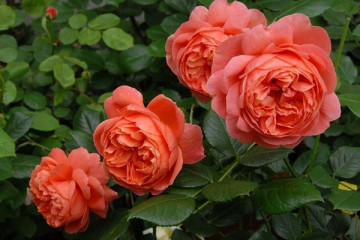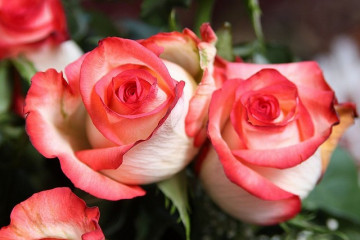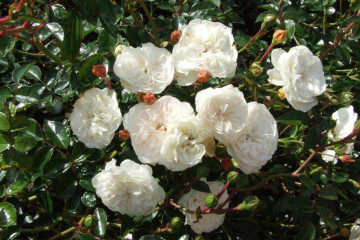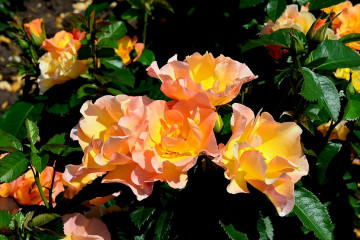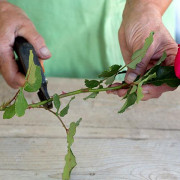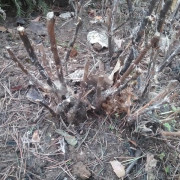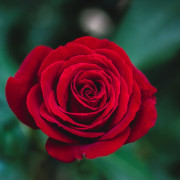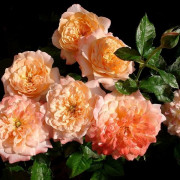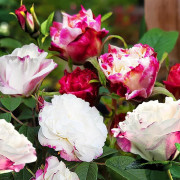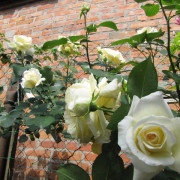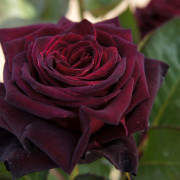Rose Augusta Luise (Augusta Luise) - characteristics of the variety
Content:
Rose Augusta Louise is one of the most popular varieties of garden roses with delicate double petals of a ripe, juicy peach shade. This is the queen of the rose garden, flower beds, plots. Interest in this flower is growing from year to year, more and more gardeners and gardeners are planting this rose bush on their site.
Rose of Augusta Luise (Augusta Luise) - what is this variety
Rosa Louise, as she is sometimes called for short, is a hybrid that was bred in 1999 in Germany. The author of the creation is Mathias Tantau, the breeder dedicated the flower to the 250th anniversary of Goethe. The rose got its name in honor of Countess Augusta Louise von Stolberg-Stolberg, who was known for her long and lively correspondence with the great writer.
Brief description, characteristic
Hybrid tea rose Augusta Louise is a beautiful flower.
Description of external data:
- flowers - large, from 12 to 15 cm, nostalgic, double;
- shade of petals - peach, pink, champagne;
- the petals are wavy, arranged chaotically;
- the aroma is pleasant, strongly pronounced;
- the height of an adult bush is up to 1.2 m;
- leaves are medium in size, dark green.
Advantages and disadvantages of the variety
Rose of Augusta Louise is loved by florists. The flower is grown not only for rose gardens and decoration of plots. The rose is used as a cut rose - incredible bouquets are made from it. The flower has both advantages and disadvantages.
| pros | Minuses |
| Long bloom. Disease resistance. Endurance to temperature extremes. | Dislikes heavy and long rains. Does not tolerate open sunlight. The aroma is revealed in full force only when the bush is in partial shade. |
Use in landscape design
In landscape design, the flower is recommended to be combined with other roses. Preference should be given to the studless hybrid and burgundy.
A rose is planted both singly and in groups of several bushes, which do not differ in special growth on the sides.
Great for creating hedges. In flower beds, it is combined with evergreen conifers and squat bushes as a bright accent.
Growing a flower, how to plant it in open ground
Rose Augusta Luise is quite unpretentious in planting and care, a novice gardener and amateur can start it. A rose grafted onto a stem is planted from seedlings.
Planting can be carried out throughout the season, but it is best done in May, when there is no risk of returning night frosts. You can plant a flower in the fall, but no later than a month before the arrival of the first frost.
Location selection
A slight blackout is required, which will protect the rose during the peak of the summer sun. If direct sunlight falls on the buds, the petals will begin to wither, and their color will change. It will become darker and more flashy.
The rose does not like strong winds and drafts.
How to prepare the soil and flower for planting
The best soil is drained, loamy soils, soil acidity is low.
The more nutritious the soil, the more abundant and brighter the flowering will be. On a land poor in minerals, it will be difficult for a rose to reveal all its splendor.
Before planting seedlings, the soil must be fertilized by adding a complex mineral fertilizer for roses. The holes are made at a distance of about 50 cm.
Before planting, seedlings must be treated with a garden broth to protect the bushes from rot. The seedling is placed with roots in a container of water for a day.
When planting, the seedling must be dug to the height of the root system. The hole is covered with fertile soil, mulched with humus on top.
Plant care
Rose of Augusta Louise does not require the creation of specific conditions.
Watering rules and humidity
Watering regularly, at the root, 3-5 times a week. In summer, the amount of water increases, in contrast to spring and autumn. In hot weather, you can water the rose only in the late afternoon, when the sun is not so strong.
It is important to ensure that the soil is not overly moist. Stagnant water is harmful to the bushes, it provokes rotting of the root system.
Top dressing and soil quality
Fertilization is mandatory. The first time the rose is fertilized immediately before planting the seedlings. Further fertilization promotes abundant and lush flowering.
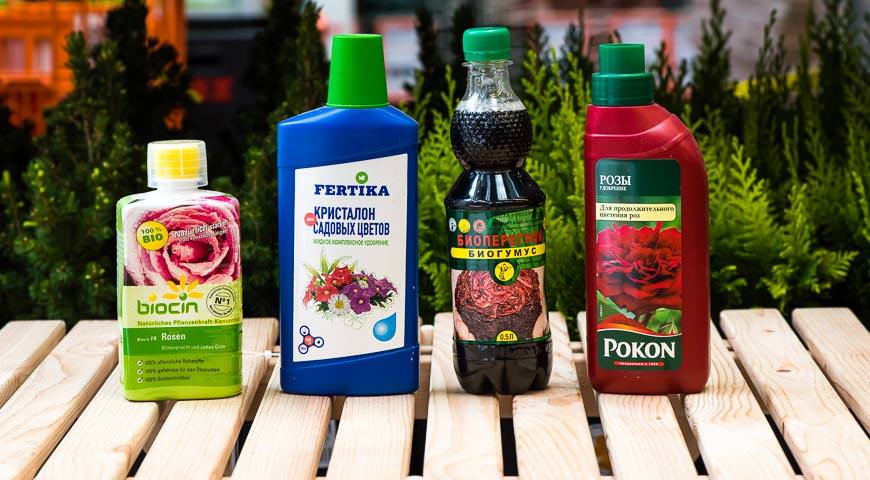
It is recommended to use phosphate fertilizers, which are applied to the soil at the same time as watering. No top dressing is required before winter.
If the soil is highly acidic, it must be fertilized with charcoal before planting when planting seedlings.
Pruning and replanting
Regular pruning, it consists in the timely removal of wilted buds. Damaged branches and limp leaves are subject to removal.
Pruning to form a beautiful bush is carried out in the spring and summer.
Spring:
- after frosts, before buds appear, bad branches are cut off, leaves left over from autumn are removed;
- after the buds are swollen - pruning shoots up to 30 cm;
- after trimming, all cut sites are treated with disinfectant solutions.
In summer, pruning is subject to:
- weak stems;
- dried branches;
- wild stems.
In the last days of July, when the fourth leaf is formed, pinching is carried out.
If a transplant is required, the bush is dug out with a lump of earth around the roots and transferred to a new hole with well-flavored soil.
Features of wintering a flower
In order for the rose to winter well, you need to take the following measures:
- loosening the earth around the bush;
- hilling the entire bush, along with shoots;
- the lower branches near the ground are covered with soil so that the roots do not freeze;
- covering the bush with spruce branches.
In areas with cold winters, the bush must be wrapped in a covering material.
Blooming rose
The rose inflorescences are lush, exude a luxurious, alluring aroma with fruity notes.
A rose, when it is in abundant color, is active in June and lasts until September. If the climate is warm, the rose will bloom until October. Before and after flowering, the bush is dormant.
During flowering, the rose only needs regular watering.After flowering, it is necessary to remove the area around it from fallen petals. Pruning of withered buds is carried out, fertilizers are applied.
What to do if it does not bloom, possible reasons
Factors that prevent the rose from blooming or blooming in full force:
- wrong place - strong winds;
- incorrect, strong pruning in the spring;
- excessive watering, constantly wet soil;
- nutrient-poor land;
- the emergence of root shoots - rose hips.
You can normalize flowering by establishing proper plant care.
Flower propagation
The rose propagates by cuttings, which are taken only from a young and strong bush.
Cuttings are cut after the first flowering of the rose.
Detailed description
For reproduction of Augusta, the following method is used:
- During the flowering period, cut off those shoots that have faded, divide so that each has at least 3 buds.
- Make 2 cuts - oblique under the kidney, straight over the kidney.
- Tear off the lower leaves, dip the shoots for 40 minutes in a weak solution of Heterooxin.
- Plant in a nutritious soil, water, cover with a glass or plastic bottle.
- Watering is not required for 30 days, the cutting is sprayed with water on top daily.
- For the winter, close with spruce branches.
- In the spring, transplant if necessary.
Diseases, pests and ways to control them
Augusta, with proper care, is disease resistant. The only thing that can hit the bush is aphids.
To combat the pest, the method of spraying the bushes with a solution of water and laundry soap is used. If it does not help, pesticide treatment.
Augusta Louise is the queen of the garden, striking with the splendor of her lush champagne buds and intoxicating fruity aromas. Taking care of her is not difficult. In order for a rose to delight with flowering all season, it is enough to water it regularly, feed it and carry out sanitary pruning.
